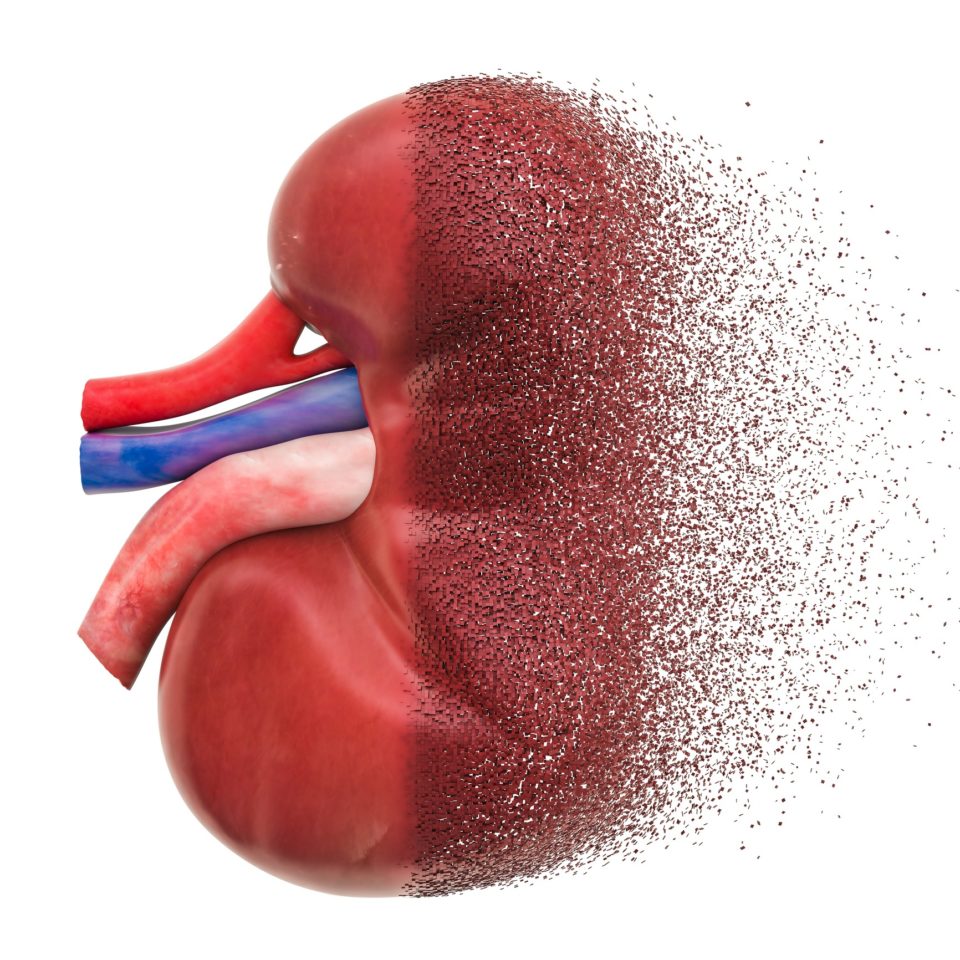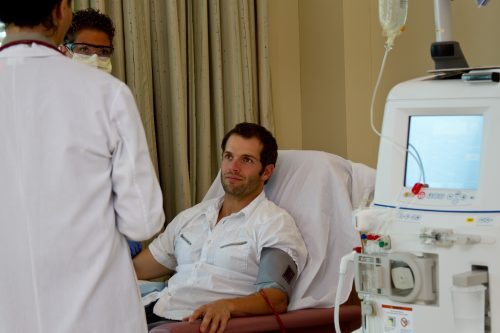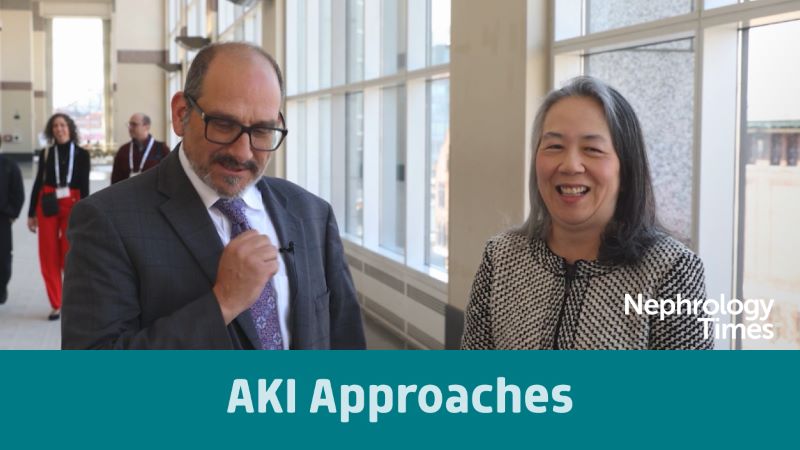
Patients admitted to the intensive care unit commonly experience acute kidney injury (AKI), a complication associated with a high risk of death or other major complications as well as increased use of resources and healthcare costs. Patients with AKI may require renal replacement therapy (RRT); however, the appropriate timing for initiation of RRT is unclear.
It is generally accepted that inpatients with AKI complicated by major metabolic disorders such as acidosis, hyperkalemia, and uremia, RRT should be initiated. However, in patients with AKI without such complications, there are few data regarding the benefits of RRT.
Initiation of RRT prior to the onset of major complications can restore and maintain acid-base homeostasis, mitigate fluid accumulation, and reduce exposure to the metabolic hazards of untreated AKI. However, according to researchers, wide adoption of early RRT may lead to initiation in patients who would have recovered and survived without therapy, and, given the risk associated with RRT, determining whether early RRT initiation improves outcomes is crucial. Findings from randomized trials comparing early and delayed strategies for RRT initiation have been inconsistent.
Sean M. Bagshaw, MD, and Ron Wald, MD, CM, MPH, and colleagues, investigators in the STARRT-AKI (Standard versus Accelerated Initiation of Renal Replacement Therapy in Acute Kidney Injury) trial, reported results of the multinational, randomized, open-label, controlled trial in the New England Journal of Medicine [2020; 383(3):240-251]. The trial was designed to compare the effect of two strategies (accelerated initiation vs standard initiation) in critically ill patients with AKI and to test the hypothesis that an accelerated strategy for RRT would result in a lower risk of death from any cause at 90 days compared with a standard initiation strategy.
Patients were randomly assigned in a 1:1 ratio to receive an accelerated strategy of RRT, defined as initiation of therapy within 12 hours following the patient meeting eligibility criteria, or a standard strategy, where RRT was discouraged unless conventional indications developed or AKI persisted for >72 hours. The primary outcome of interest was death from any cause at 90 days. Key secondary outcomes at 90 days were dependence on RRT; a composite of death or dependence on RRT; and a major adverse kidney event, defined as death, dependence on RRT, or a sustained reduction in kidney function.
Eligible patients were ≥18 years of age and were admitted to the ICU with kidney dysfunction, defined as serum creatinine level ≥1.13 mg/dL in women and ≥1.47 mg/dL in men, and diagnosed with severe AKI stage 2 or 3 based on the Kidney Disease Improving Global Outcomes classification. Exclusion criteria were focused on emergency indications, previous RRT, advanced chronic kidney disease (CKD), and uncommon causes of AKI. The presence of all inclusion criteria and none of the first eight exclusion criteria established provisional eligibility.
A total of 11,852 patients met provisional eligibility from October 2015 through September 2019. Of those 11,852 patients, 3019 were randomly assigned to accelerated strategy (n=1512) or standard strategy (n=1507). In the accelerated-strategy group 31 patients were subsequently deemed to be ineligible to participate, nine withdrew consent, and seven were lost to follow -up. In the standard-strategy group, 19 were deemed ineligible, 18 withdrew consent, and eight were lost to follow-up. The modified intention-to-treat analysis included 2927 patients (1465 in the accelerated-strategy group and 1462 in the standard-strategy group).
At baseline, characteristics were well balanced between the two groups. Overall, CKD was present in 1284 patients (43.9%); 965 patients (33.0%) had been admitted to the hospital to undergo surgery, 1689 (57.7%) had sepsis, and the mean Simplified Acute Physiology Score (SAPS) II and Sequential Organ Failure Assessment (SOFA) scores were 58.8 and 11.7, respectively.
In the accelerated-strategy group, RRT was initiated at a median of 6.1 hours following determination of full eligibility in 96.8% (n=1418/1465) of the patients. RRT was initiated at a median of 31.1 hours after determination of full eligibility in 61.8% (n=903/1462) of patients in the standard-strategy group. Among the patients in the standard-strategy group who underwent RRT, 66.1% (n=597/903) met at least one prespecified indication for RRT initiation. Compared with patients in the accelerated-strategy group, at the time of RRT initiation, SOFA score, serum creatinine level, blood urea nitrogen level, and positive fluid balance were higher in the standard-strategy group.
In the modified intention-to-treat analysis, the primary outcome of death at 90 days occurred in 43.9% of patients (n=643) in the accelerated-strategy group and 43.7% (n=639) of those in the standard-strategy group (relative risk [RR], 1.00; 95% confidence interval [CI], 0.93-1.09), for an absolute risk difference of 0.2 percentage points. Following adjustment, analysis results were similar (adjusted odds ratio; 1.05; 95% CI, 0.90-1.23).
Among patients who survived past 90 days, continued need for RRT was seen in 10.4% (n=85/814) in the accelerated-strategy group and in 6.0% (n=49/815) of patients in the standard-strategy group (RR, 1.74; 95% CI, 1.24-2.43), a robust result following inverse probability weighting and in a multinomial analysis.
There were no meaningful differences between the two groups in the composite of death or dependence on RRT; major adverse kidney events at 90 days; death in the ICU at 28 days; or length of hospitalization. There were no between-group differences in causes of death. Patients in the two groups had similar number of days free of RRT; patients in the accelerated-strategy group had marginally fewer days of RRT and shorter ICU stay than those in the standard-strategy group.
The rates of adverse events were 23.0% (n=346/1503) of the accelerated-strategy group and 16.5% (n=245/1489) of the standard-strategy group (RR, 1.40; 95% CI, 1.21-1.62; P<.001). The most common events with a significant between-group difference were hypotension and hypophosphatemia, There were no differences between the two groups in serious adverse events.
There were some limitations to the study cited by the authors including the subjective perception of equipoise, the broad discretion of the optimal start of RRT among patients in the standard-strategy group, and the greater frequency of adverse events in the accelerated-strategy group.
The researchers said, “In conclusion, in critically ill patients with severe acute kidney injury, an accelerated strategy for the initiation of renal-replacement therapy did not result in a lower mortality at 90 days than a standard strategy.”
Takeaway Points
- The most effective timing for the initiation of renal replacement therapy (RRT) among critically ill patients with acute kidney injury (AKI) is uncertain.
- Investigators for the STARRT-AKI trial reported results of the multinational, randomized, open-label controlled study designed to compare the effect of accelerated initiation versus standard initiation of RRT.
- There was no association between an accelerated RRT initiation strategy and a lower risk of death at 90 days compared with a standard initiation strategy.







 © 2025 Mashup Media, LLC, a Formedics Property. All Rights Reserved.
© 2025 Mashup Media, LLC, a Formedics Property. All Rights Reserved.